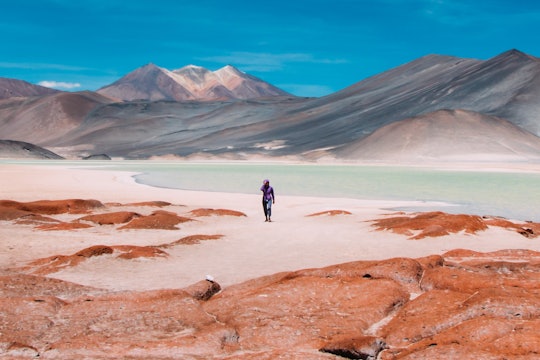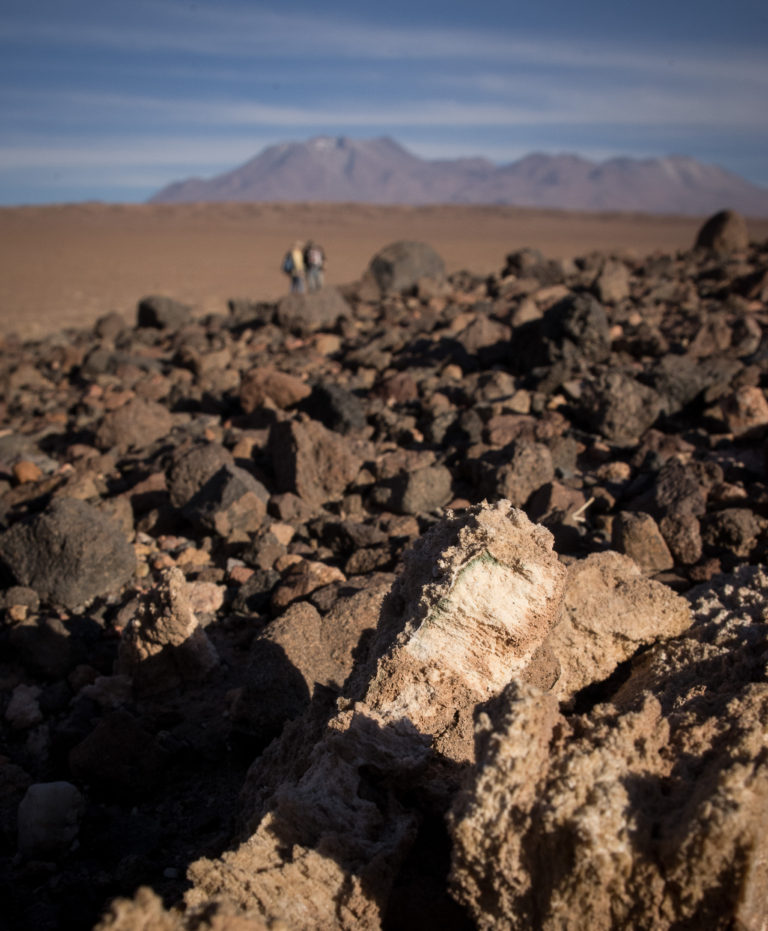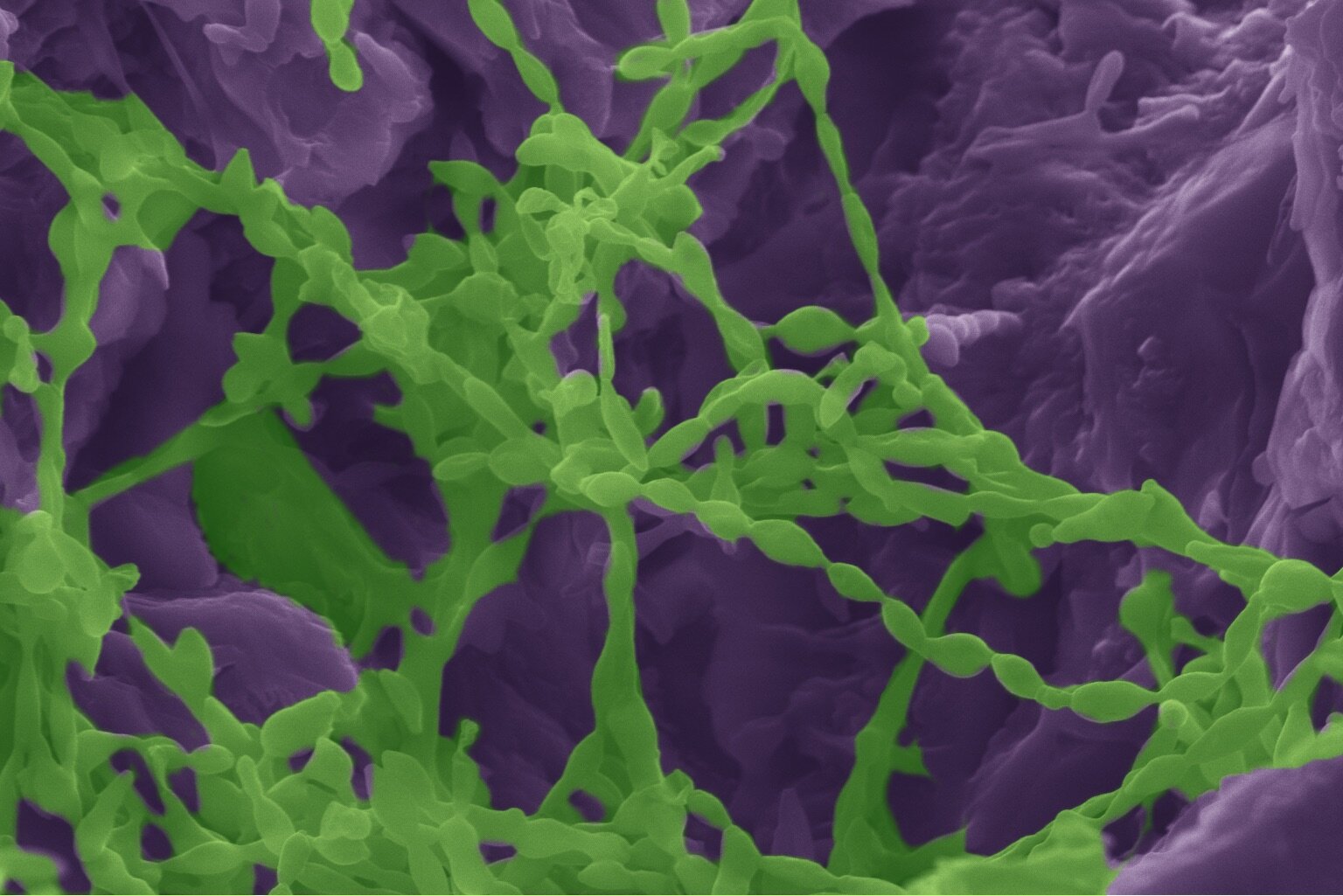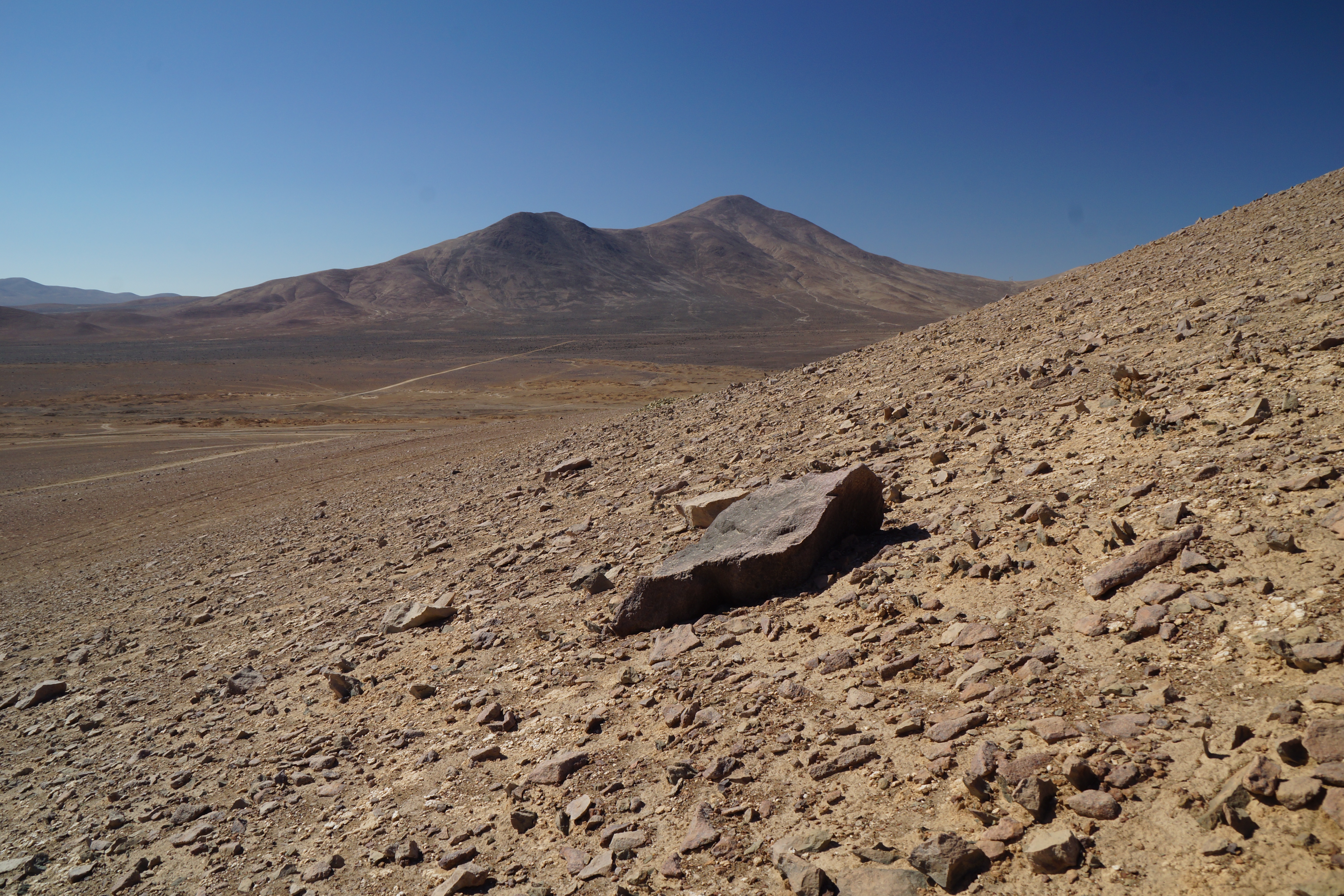
Extreme microbes survive the desert by dissolving rocks with acid
"...the thought about the desert dehydrating the rocks was not correct. It was actually the microbes dehydrating the rock"
Bombarded by the dry heat deep in the Atacama Desert, Jocelyne DiRuggiero’s team anchored a blue tarp to the roof of their truck for some much-needed shade. Those tarps proved futile though, getting ripped out by the afternoon's winds. It’s hard to imagine anything thriving in such a bone-dry stretch of this Chilean desert. And yet, DiRuggiero, a biologist at Johns Hopkins University, came here looking for life — in the rocks.
It’s no news that even the harshest places on Earth can support life. Even Atacama, a classic stand-in for Mars’ surface in space biology research, supports life. Researchers first reported finding life there in 2006. Because parts of Atacama can go years without a drop of rain, researchers have suspected that rocks could hold small amounts of moisture. But it was unclear exactly how organisms could break into the rocks and harvest that water. New research from biologists and materials scientists claims to pinpoint this survival tactic.

Atacama Desert in Chile
Jocelyne DiRuggiero
“How the heck could these organisms live in this extreme environment?” says David Kisailus, who led the work published this week in Proceedings of the National Academy of Sciences. Kisailus, a materials scientist at the University of California Irvine fittingly likens the water extraction to “getting blood from a stone.”
"Extremophiles" like Atacama’s microbes are hardy microorganisms known for somehow surviving Earth’s most unbearable conditions. They could be archaebacteria braving the hot, acidic waters of Yellowstone geysers, “water bears” surviving deep oceans and outer space, or, in this case, cyanobacteria nestling in moist pockets of gypsum in Atacama.

A piece of gypsum with a green streak characteristic of cyanobacteria.
Courtesy of Brenda Buck
The work to figure out the Atacama cyanobacteria’s tactics began when DiRuggiero approached Kisailus and told him about rocks striped with green streaks of cyanobacteria. “I said [to DiRuggiero], ‘Oh we could really just take a look at those rocks for you,’” says Kisailus.
In something like gypsum, you’ll find a mix of calcium, sulfur, and oxygen molecules neatly arranged in a pattern that tightly holds two molecules of water. Kisalius's lab could detect those specific elements and the patterns of how they’re distributed in the rock.
That gypsum structure is particular, but not permanent. At the molecular level, mineral crystals can have different “phases.” Just as pasta can transition from dried rods to cooked noodles to a mushy pile of slop, gypsum crystals can turn into different crystals — bassanite or anhydrite, depending on how much of that water escapes.

Gypsum from Atacama
David Kisailus
Wei Huang, a postdoctoral fellow in Kisailus’s lab and lead author of the study, looked at desert rock samples closely. In the rocks without any bacteria, Huang confirmed the rocks were in fact gypsum, with crystals loaded with water molecules. But in the rocks striped with “green goo” from cyanobacteria, Huang found pockets of anhydrite — the dehydrated phase of gypsum.
“So you know, the thought about the desert dehydrating the rocks was not correct. It was actually the microbes dehydrating the rock,” says Kisailus. “That was kind of the first step of, 'Wow, OK something’s going on here.'”
But how do these cyanobacteria set up shop? Those green gooey stripes contouring the rock are actually biofilms — a sort of city of microbes and extracellular material.
The rocks supporting that biofilm have to be pretty special, according to DiRuggiero. They have to be somewhat translucent to allow photosynthesizing microbes to get energy from the sun. Gypsum fits that bill, and so microbes in a biofilm on gypsum can make carbon-containing molecules that keep their community alive.

Biofilm (green) in a sample of gypsum
David Kisailus / UCI
“It’s a little bit like gardeners in a city. They make food and then distribute to everybody else,” she says. Of course, she adds, “bacteria are not altruistic. They don’t have a brain, they don’t think about it.”
The team determined that the biofilm was loaded with organic acids. And those acids could etch away at the rock.
“I think methodologically what they did and how they did it, that was done very nicely,” says Liane Benning, a biogeochemist at the German Institute for Research in Geoscience, GFZ Potsdam. Benning, who is unaffiliated with the work, also studies gypsum and extremophiles. She was not entirely convinced that the acid released by the microbes is strong enough to carve through gypsum on its own. “That’s the one thing which I found surprising.”
According to Kisailus, that acid etching happened on the most jagged, unstable crystal edges of gypsum. He says these rough surfaces are the most susceptible to disruption from the “microbe miners.”
In the absence of rain or dew, the cyanobacteria extract as much water from the gypsum crystals as they can, according to DiRuggiero. “Then at some point there is not enough water, and they just go dormant,” she says. “But as soon as there is water, they turn on very quickly.”

The Atacama desert in Chile
NASA
This ability to cycle between dormant and active in such a dry desert has some people wondering how Atacama’s microbes could shape our thinking of life surviving underground on Mars. Mars does have ice, had rivers, and it also appears to have gypsum. But researchers are cautious with their expectations.
“I was very pleased that they didn’t make too big of a fuss about it, but kept it very down to Earth,” Benning says. She is fascinated enough by the signs of life all over Earth. “If you have a smidgen...a sniff of water, they will find a way to get the rest of the energy.”
And learning about Earth’s most extreme lifeforms is increasingly important in a warming world. According to Kisailus, lessons from this work could inspire new water storage and production technologies And perhaps more fundamentally — this type of work connects people in a lasting way to ecosystems like Atacama’s. “It’s fabulous,” DiRuggiero says. “It’s absolutely fabulous.”
